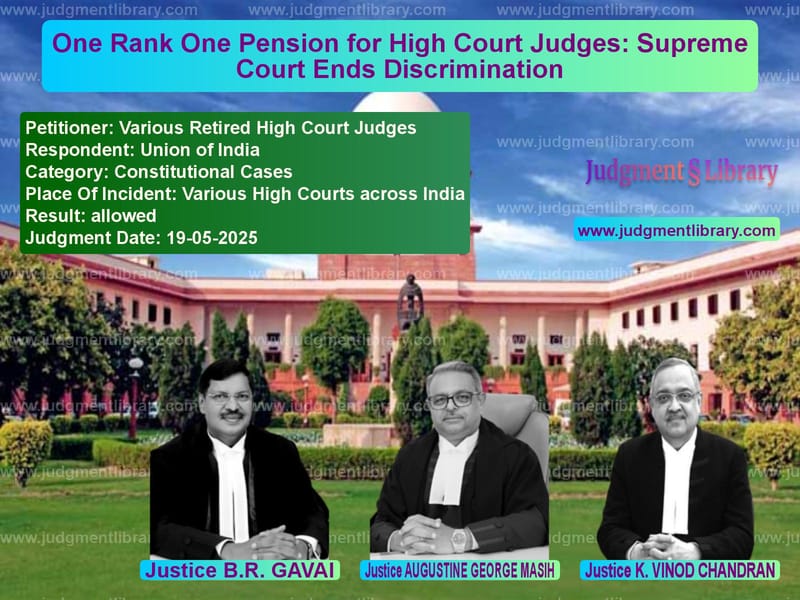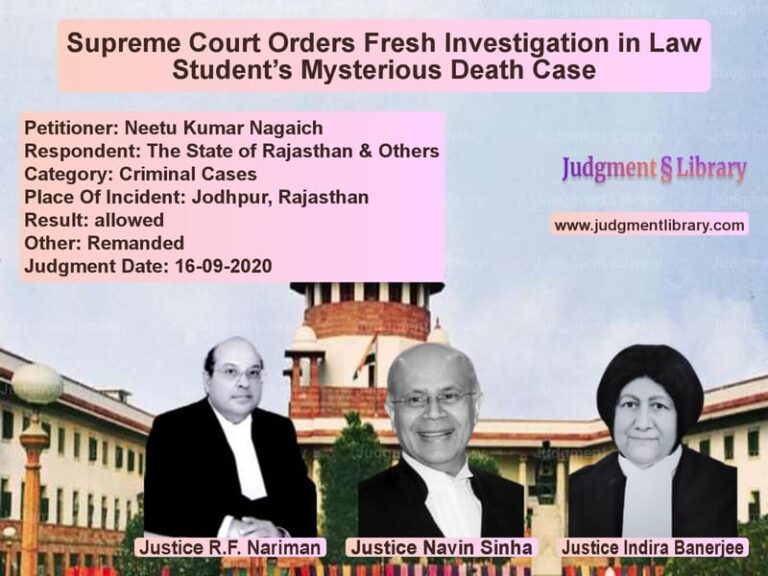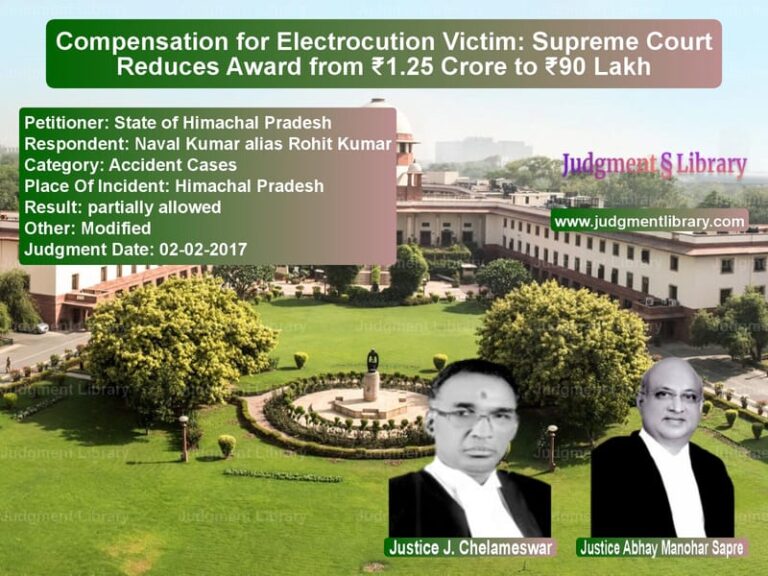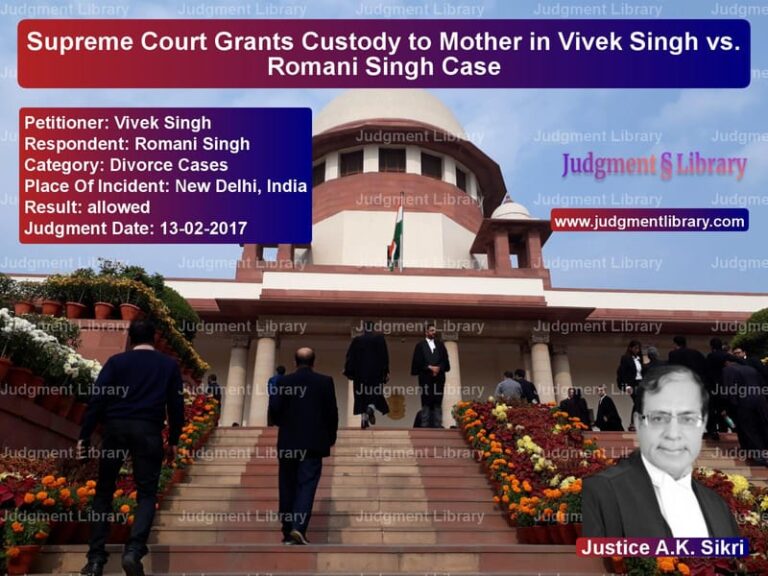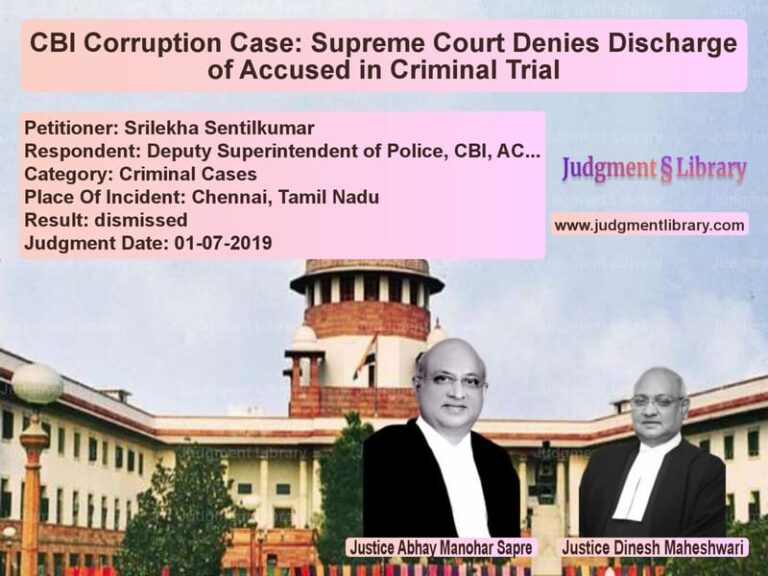One Rank One Pension for High Court Judges: Supreme Court Ends Discrimination
In a landmark judgment that reaffirms the principle of equality among constitutional office holders, the Supreme Court of India has delivered a comprehensive ruling ensuring uniform pension benefits for all retired High Court Judges regardless of their source of appointment or length of service. The case, which consolidated multiple petitions from retired judges across the country, addresses long-standing disparities in pension calculations that had created different classes among judges who held the same constitutional office.
The matter came before a bench headed by Chief Justice B.R. Gavai, who noted that various retired judges had approached the court with grievances about discriminatory pension practices. Some judges who had served in district judiciaries before their elevation found their pensions calculated based on their last drawn salary as district judges rather than as High Court judges. Others who had breaks between their district service and High Court appointment faced similar reductions. Additional judges and those appointed after the New Pension Scheme implementation also encountered different treatment in pension calculations.
The court observed that these practices created unconstitutional distinctions among judges who, during their service, received identical salaries, allowances, and perks. The judgment emphasizes that once a person assumes the office of a High Court Judge, they enter a homogeneous constitutional class where all distinctions based on source of appointment become irrelevant.
Legal Framework and Constitutional Provisions
The court extensively examined Article 221 of the Constitution of India, which provides that judges shall be paid salaries as determined by Parliament and shall be entitled to allowances and pension rights as may be determined by law. The proviso to Clause 2 specifically states that neither the allowances of a judge nor his rights in respect of leave of absence or pension shall be varied to his disadvantage after his appointment.
The High Court Judges (Salaries and Conditions of Service) Act, 1954, enacted under Article 221, defines ‘Judge’ broadly to include the Chief Justice, an acting Chief Justice, an additional Judge and an acting Judge. The definition of ‘pension’ under the Act includes any gratuity or other sums payable by way of death or retirement benefits.
The court noted that Section 14 of the HCJ Act provides for pension payment in accordance with scales in Part I of the First Schedule, while Section 15 deals with judges who have held other pensionable posts under the Union or State. The critical observation was that both parts ultimately provide for the same maximum pension ceilings – Rs. 15,00,000 per annum for Chief Justices and Rs. 13,50,000 for other judges.
Historical Context and Judicial Precedents
The judgment traces the evolution of pension jurisprudence for judges through several landmark cases. In M.L. Jain v. Union of India (1985), the court held that a retiring judge’s entire service as a judge must be reckoned for pension calculation, and the last pay drawn must be as a High Court judge, not as a district judge.
In P. Ramakrishnam Raju v. Union of India (2014), the court addressed discrimination between judges appointed from the bar versus those from judicial services. The court unequivocally stated: “When persons who occupied the constitutional office of Judge, High Court retire, there should not be any discrimination with regard to the fixation of their pension. Irrespective of the source from where the Judges are drawn, they must be paid the same pension just as they have been paid same salaries and allowances and perks as serving Judges.”
The court further emphasized: “One rank one pension must be the norm in respect of a constitutional office.”
In Union of India v. Justice (Retd) Raj Rahul Garg (2024), the court rejected the Union’s argument that break in service between district judiciary retirement and High Court appointment could justify pension calculation based on district judge salary. The court warned: “To accept this position would be contrary to established precedent and would result in a clear discrimination between a member of the Bar who becomes a Judge of the High Court and a member of the district judiciary who is appointed as a Judge of the High Court.”
Key Issues Resolved
The court addressed six primary issues that had created pension disparities among retired High Court judges.
Regarding non-consideration of district judiciary service for full pension, the court held that all retired judges are entitled to pension calculated on the basic pension of Rs. 13,50,000 per annum for judges and Rs. 15,00,000 for Chief Justices. The court reasoned that since High Court judges receive identical salaries while in service, creating distinctions in pension would violate Article 14.
On the issue of break in service, the court followed its earlier precedent in Justice Raj Rahul Garg case, holding that any break between district service and High Court appointment cannot justify denial of full pension based on High Court salary.
For judges who entered state judiciary after the New Pension Scheme implementation, the court held they are still entitled to full pension under the HCJ Act. The court directed states to refund the NPS contributions made by such judges along with accrued dividends, while state contributions would be credited back to state accounts.
Regarding additional judges, the court held that the definition of ‘Judge’ in the HCJ Act includes additional judges, and therefore: “We, therefore, have no hesitation in holding that even the retired Judges who have retired as Additional Judges will be entitled to the same amount of basic pension i.e., Rs.13,50,000/- per annum.”
On family pension and gratuity for families of additional judges, the court found denial of these benefits merely because a judge died as an additional judge to be “patently arbitrary.” The court also directed that for gratuity calculation, a period of ten years should be added to the actual service period.
Finally, on provident fund benefits, the court clarified that all retirement benefits must be paid in accordance with the HCJ Act, irrespective of the mode of entry as High Court judge.
Constitutional Principles and Judicial Independence
The judgment powerfully articulates the connection between financial security and judicial independence. Quoting from Justice Shailendra Singh case, the court noted: “Judicial independence is a part of the basic structure of the Constitution and there is an intrinsic relationship between financial independence of judges and judicial independence.”
The court further emphasized: “The significance of provisions pertaining to the guarantee of service conditions, while in service and post retiral benefits for judges is evidenced by the fact that the salaries and allowances of sitting judges and the pensions of retired judges are in the nature of a charge on the Consolidated Fund of the State and the Consolidated Fund of India respectively.”
The court made a profound observation about the homogeneous nature of the High Court judiciary: “All judges of the High Court, irrespective of the source from which they are drawn, are entrusted with the same constitutional function of discharging duties of adjudication under the law. Once appointed as judges of the High Court, their birthmarks stand obliterated and any attempt to make a distinction between judges, either for the purpose of determining their conditions of service while in service or any form of retiral dues would be unconstitutional.”
Comprehensive Directions
The court issued detailed directions to implement the principle of one rank one pension for all High Court judges. The Union of India must pay full pension of Rs. 15,00,000 per annum to retired Chief Justices and Rs. 13,50,000 to other judges, including additional judges.
The principle applies irrespective of source of entry or years served. Break in service cannot justify reduced pension. For judges covered by NPS, states must refund their contributions with dividends. Family pension and gratuity must be paid to families of all judges, including additional judges, with ten years added to service period for gratuity calculation.
All arrears must be paid with 6% interest within six months. The court specifically directed: “We direct that the Union of India shall follow the principle of One Rank One Pension to all the retired Judges of the High Courts irrespective of their source of entry i.e., District Judiciary or the Bar, and irrespective of number of years that they have served either as a District Judge or a High Court Judge.”
Conclusion
This landmark judgment represents a significant step toward ensuring dignity and financial security for retired High Court judges. By eliminating arbitrary distinctions and implementing the one rank one pension principle, the Supreme Court has strengthened judicial independence and affirmed the equal status of all constitutional office holders.
The comprehensive nature of the ruling, addressing multiple sources of discrimination, ensures that future retired judges will receive uniform pension benefits regardless of their career path to the High Court. The judgment reaffirms that the constitution envisages a unified judiciary where all judges, once appointed, shed their previous identities and form a single constitutional class entitled to equal treatment and benefits.
The court’s reasoning, grounded in constitutional principles of equality and judicial independence, provides a robust framework for understanding the importance of post-retirement benefits for constitutional functionaries. By ensuring financial security for retired judges, the judgment ultimately serves the larger goal of preserving judicial independence and maintaining the integrity of the justice delivery system.
Petitioner Name: Various Retired High Court Judges.Respondent Name: Union of India.Judgment By: Justice B.R. GAVAI, Justice AUGUSTINE GEORGE MASIH, Justice K. VINOD CHANDRAN.Place Of Incident: Various High Courts across India.Judgment Date: 19-05-2025.Result: allowed.
Don’t miss out on the full details! Download the complete judgment in PDF format below and gain valuable insights instantly!
Download Judgment: various-retired-high-vs-union-of-india-supreme-court-of-india-judgment-dated-19-05-2025.pdf
Directly Download Judgment: Directly download this Judgment
See all petitions in Pension and Gratuity
See all petitions in Fundamental Rights
See all petitions in Constitution Interpretation
See all petitions in Public Interest Litigation
See all petitions in Separation of Powers
See all petitions in Judgment by B R Gavai
See all petitions in Judgment by Augustine George Masih
See all petitions in Judgment by K. Vinod Chandran
See all petitions in allowed
See all petitions in supreme court of India judgments May 2025
See all petitions in 2025 judgments
See all posts in Constitutional Cases Category
See all allowed petitions in Constitutional Cases Category
See all Dismissed petitions in Constitutional Cases Category
See all partially allowed petitions in Constitutional Cases Category

